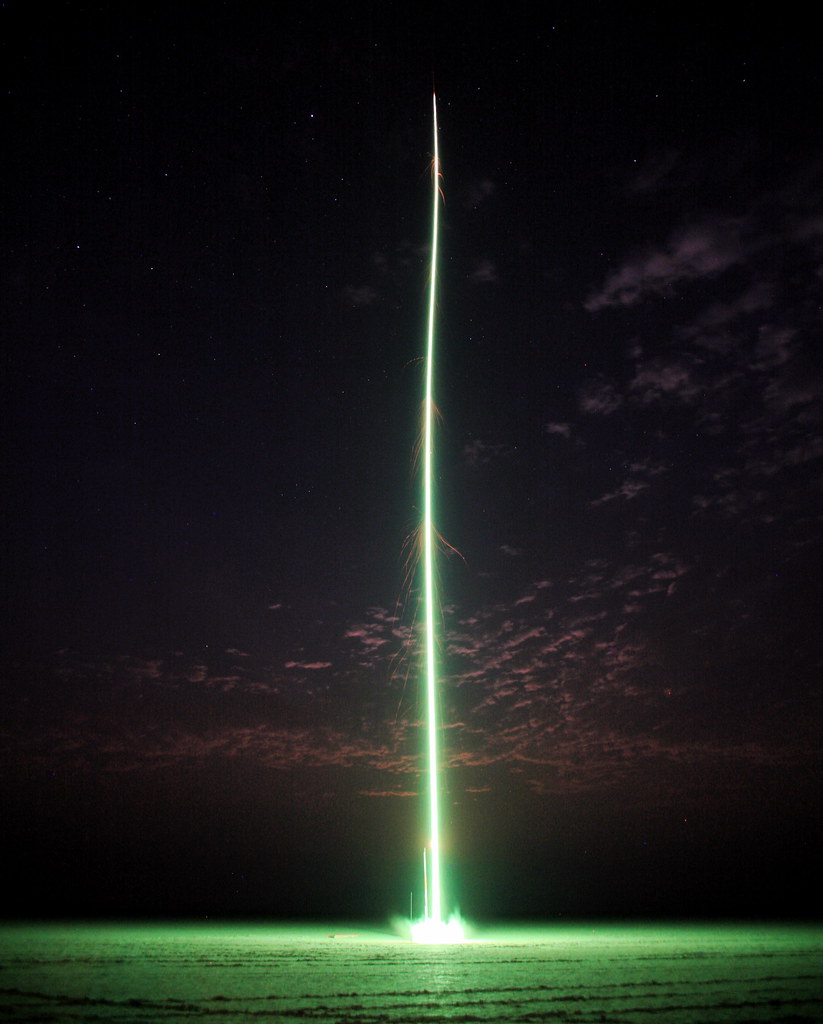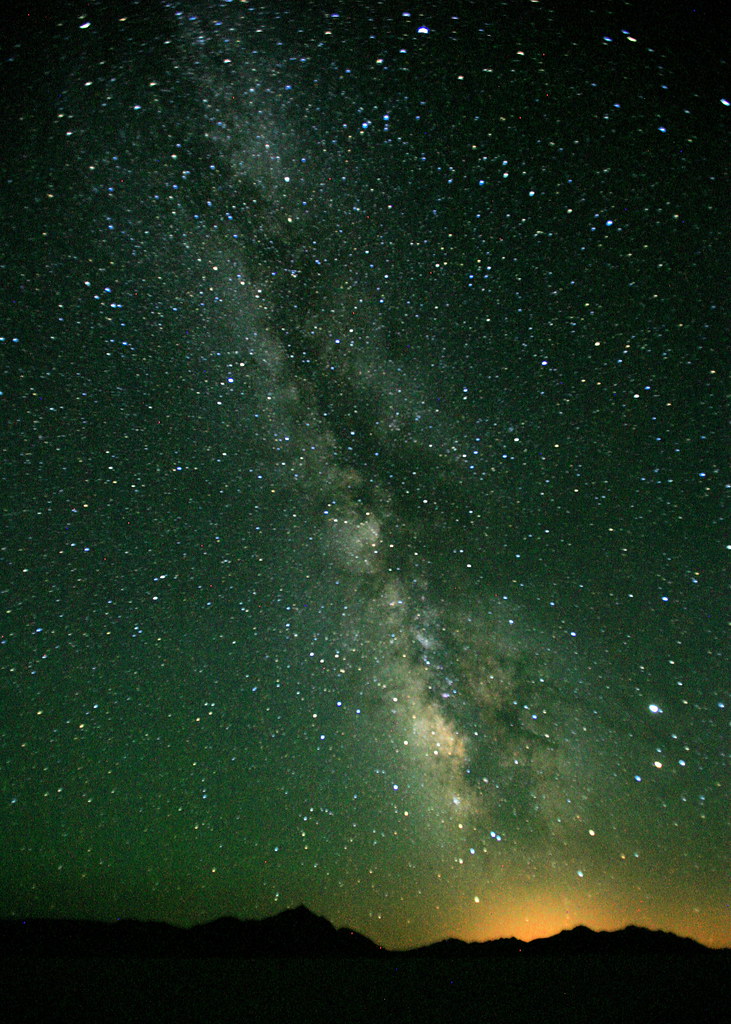Richard Hagen's rocket, flying on a Aerotech J500G motor, created a wonderful night light over the Black Rock Desert playa.
With some of the night photos, there are random RGB pixels; digital astronomy photography becomes an exercise in the statistics of noise. The high-end photographers liquid cool their sensors and build images from a large number of relatively short exposure shots. For bright objects, like the local planets, they integrate an image from video. It's fascinating, and totally out of my league. This is just a single digital exposure without Photoshop.
It also helps to be in one of the least light-polluted parts of the United States -Â Black Rock Desert, looking toward the 3-million solar mass black hole lurking in the center of our galaxy:


With some of the night photos, there are random RGB pixels; digital astronomy photography becomes an exercise in the statistics of noise. The high-end photographers liquid cool their sensors and build images from a large number of relatively short exposure shots. For bright objects, like the local planets, they integrate an image from video. It's fascinating, and totally out of my league. This is just a single digital exposure without Photoshop.
It also helps to be in one of the least light-polluted parts of the United States - Black Rock Desert, looking toward the 3-million solar mass black hole lurking in the center of our galaxy:
thanks....beutfulll goood
nice photo thanks..